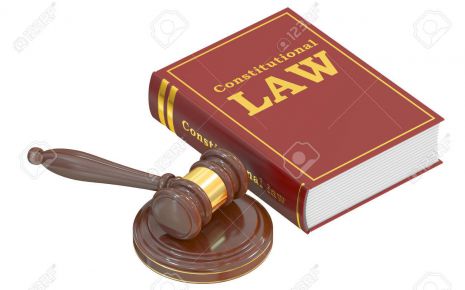Merger & Acquisition in India: Analyzing the Companies Act 2013 & Competition Act 2002
Mergers and acquisitions in recent times due to globalization have gained
significant importance. It plays a major role in the activities of the
organization. Mergers and acquisitions are considered as one of the best
strategies to confront the global competitive market. With globalization, unless
the company is large in size and capital, it will be very difficult to compete
with nations where the cost of production is lower due to economies of scale.
In a free competitive world, it is necessary to position oneself in such a manner to compete with the best. For this the faster route is necessary. Mergers and acquisitions that are successful are highly proven to be beneficial for the companies as well as the economy. Especially in developing countries like India mergers and acquisitions play a major role in the growth of India's economy. Such a legal framework for corporate restriction must be easy, facilitative in nature, non-restrictive, and free from regulatory hurdles.
One such hurdle in the way of completing mergers and acquisitions is the long drawn-out court procedure required for the approval of the scheme of arrangement. In India, the process of merger and acquisition is court driven, lengthy, and hence problematic. In India, the Companies Act, 2013, and the Competition Act, 2002, govern mergers and acquisitions involving Indian companies while the Competition Act, 2002 ensures fair competition and prevents monopolistic practices in the market.
When two or more individual businesses consolidate to form a new enterprise, it is known as a merger. The merged entity usually takes on a new name, ownership, and management that is composed of employees from both companies.
Acquisition
An acquisition entails one organization acquiring the business of another. The acquirer must purchase at least 51% of the target company's stock in order to gain absolute control over it. It usually occurs between two companies that are not equal in stature: a financially stronger entity generally acquires a smaller, relatively weaker one.
Merger And Its Types:
Horizontal Mergers
Horizontal mergers occur when the two merging companies produce similar products in the same industry. Example: Merger of Vodafone India and Idea cellular limited, merger of two telecommunication companies.
Vertical Merger
Vertical mergers take place when two companies working at different stages in the production of the same good, combine. Example: Zee Entertainment enterprises ltd. And Dish Tv India ltd. The merger between a broadcast and distribution platform operator.
Congeneric Merger
A congeneric merger takes place when two merging firms are in the same general industry, but have no mutual customer or supplier relationship. Example: Thomas Cook India limited and Sterling Holiday resorts (India) Limited merger between these two companies which were involved in the tourism business, but their customer base is unrelated.
Section 5 of the Competition Act deals with combinations, which includes mergers and acquisitions, and lays down the threshold limits for the parties involved in the combination. It requires parties to notify the Competition Commission of India (CCI) when the assets or turnover of the combination exceed the prescribed limits.
Section 6 of the Competition Act provides for the scrutiny of combinations by the CCI to determine whether they are likely to have an appreciable adverse effect on competition in the relevant market in India. The CCI has the power to approve, reject or approve the combination with modifications. Together, these sections regulate the process of mergers and acquisitions in India and ensure that they do not harm competition in the relevant market.
Some of the key areas of conflict include:
Thresholds for merger control:
The Companies Act 2013 and the Competition Act 2002 have different thresholds for determining whether a merger or acquisition is subject to competition law review. Under the Competition Act, a combination (which includes mergers and acquisitions) is notifiable if it meets certain asset and turnover thresholds. However, the Companies Act has a different set of thresholds for mergers and acquisitions, which are based on the size of the companies involved. This has led to confusion and uncertainty as to which transactions are subject to competition law review.
Timeframe for approval:
The Competition Act provides for a mandatory waiting period of 210 days for the approval of combinations, which can be extended in certain circumstances. However, the Companies Act does not have a specific timeframe for the approval of mergers and acquisitions. This has led to delays in the approval process, as companies have to wait for approvals from both the Competition Commission of India (CCI) and the Registrar of Companies.
Jurisdictional issues:
There have been instances where the CCI and the National Company Law Tribunal (NCLT) have differed in their interpretation of the law with respect to mergers and acquisitions. This has led to jurisdictional issues and confusion, as companies are unsure which authority to approach for approval.
Role of minority shareholders:
The Companies Act 2013 provides for the protection of minority shareholders in mergers and acquisitions, while the Competition Act does not explicitly address this issue. This has led to conflicts between the two acts, as the protection of minority shareholders may require changes to the terms of the merger or acquisition, which may in turn affect competition in the market.
One example of conflict between the two acts is the Tata-Docomo case, where the NCLT and the CCI had differing opinions on the legality of the termination of a joint venture agreement between Tata Teleservices and NTT Docomo. Another example is the proposed merger between Uber and Ola, which was challenged by the Competition Commission on the grounds that it would create a monopoly in the ride-hailing market.
Conclusion
To address these conflicts there have been calls for greater coordination between the CCI and the NCLT, as well as the need for clear guidelines on the role of each authority in the approval process. There is also a need to harmonize the threshold for merger control under both Acts, to avoid confusion and legal uncertainty.
It is important to note that the objective behind both Acts is to ensure fair competition and protect the interest of the stakeholders. hence compliance with both Acts is necessary to avoid attracting unnecessary legal uncertainties. It is important that government take the necessary steps to address the conflicts between Companies Act 2013 and Competition Act, 2002 to ensure a smooth and efficient approval process for mergers and acquisitions.
In a free competitive world, it is necessary to position oneself in such a manner to compete with the best. For this the faster route is necessary. Mergers and acquisitions that are successful are highly proven to be beneficial for the companies as well as the economy. Especially in developing countries like India mergers and acquisitions play a major role in the growth of India's economy. Such a legal framework for corporate restriction must be easy, facilitative in nature, non-restrictive, and free from regulatory hurdles.
One such hurdle in the way of completing mergers and acquisitions is the long drawn-out court procedure required for the approval of the scheme of arrangement. In India, the process of merger and acquisition is court driven, lengthy, and hence problematic. In India, the Companies Act, 2013, and the Competition Act, 2002, govern mergers and acquisitions involving Indian companies while the Competition Act, 2002 ensures fair competition and prevents monopolistic practices in the market.
Objectives Behind Corporate Mergers And Acquisitions
- To achieve economies of scale
- To compete globally in a free competitive market
- To use the liquidity available with the company for achieving growth through diversification.
- For overall improvement of the industry
- Tax purpose
- Diversification, Increase in financial capacity act.
What Is Merger And Acquisition?
MergersWhen two or more individual businesses consolidate to form a new enterprise, it is known as a merger. The merged entity usually takes on a new name, ownership, and management that is composed of employees from both companies.
Acquisition
An acquisition entails one organization acquiring the business of another. The acquirer must purchase at least 51% of the target company's stock in order to gain absolute control over it. It usually occurs between two companies that are not equal in stature: a financially stronger entity generally acquires a smaller, relatively weaker one.
Key Differences Between Mergers And Acquisition
| Basis | Mergers | Acquisitions |
| Meaning | Two or more individual companies join to form a new business entity | One company completely takes over the operations of another. |
| Shares | New shares are issued | No new shares are issued |
| Company name | The merged entity works under another or new name. | The acquired entity operates under name of parent company |
| Power | There is a harmony and dilution of powers | The acquiring company has a power and authority. |
| Minimum no od companies involved | 3 | 2 |
| Purpose | To increase operational efficiency | For faster growth |
| Examples | Flipkart and E-bay India (2017) | Zomato Uber eats (2020) |
Merger And Its Types:
Horizontal Mergers
Horizontal mergers occur when the two merging companies produce similar products in the same industry. Example: Merger of Vodafone India and Idea cellular limited, merger of two telecommunication companies.
Vertical Merger
Vertical mergers take place when two companies working at different stages in the production of the same good, combine. Example: Zee Entertainment enterprises ltd. And Dish Tv India ltd. The merger between a broadcast and distribution platform operator.
Congeneric Merger
A congeneric merger takes place when two merging firms are in the same general industry, but have no mutual customer or supplier relationship. Example: Thomas Cook India limited and Sterling Holiday resorts (India) Limited merger between these two companies which were involved in the tourism business, but their customer base is unrelated.
Legal Framework On Mergers And Acquisition In India Under The Companies Act, 2013:
The provisions governing mergers and acquisitions under the Companies Act, 2013, are as follows:- Section 230-232: These sections deal with the scheme of compromise, arrangement, and amalgamation. They provide a framework for mergers and acquisitions, including demergers, amalgamations, and arrangements between companies.
- Section 235: This section empowers the National Company Law Tribunal (NCLT) to order an investigation into the affairs of a company in the event of a merger or amalgamation.
- Section 236: This section provides for the submission of a report by the company's auditor to the NCLT regarding the proposed merger or amalgamation.
- Section 237: This section enables the Central Government to order an investigation into the affairs of the company before granting approval for the merger or amalgamation.
- Section 240-242: These sections deal with the powers of the NCLT to order the convening of meetings of shareholders and creditors, the notice of the meeting, and the procedure for the approval of the merger or amalgamation.
Legal Framework On Mergers And Acquisition In India Under Competition Act, 2002:
The relevant sections of the Competition Act 2002 that deal with mergers are Sections 5 and 6 are as follows:Section 5 of the Competition Act deals with combinations, which includes mergers and acquisitions, and lays down the threshold limits for the parties involved in the combination. It requires parties to notify the Competition Commission of India (CCI) when the assets or turnover of the combination exceed the prescribed limits.
Section 6 of the Competition Act provides for the scrutiny of combinations by the CCI to determine whether they are likely to have an appreciable adverse effect on competition in the relevant market in India. The CCI has the power to approve, reject or approve the combination with modifications. Together, these sections regulate the process of mergers and acquisitions in India and ensure that they do not harm competition in the relevant market.
Conflict Between Companies Act 2013 And Competition Act 2002 With Respect To Mergers And Acquisition:
The Companies Act 2013 and the Competition Act 2002 both play an important role in regulating mergers and acquisitions in India. However, there have been instances of conflict between the two acts, leading to legal uncertainty and delay in the approval process.Some of the key areas of conflict include:
Thresholds for merger control:
The Companies Act 2013 and the Competition Act 2002 have different thresholds for determining whether a merger or acquisition is subject to competition law review. Under the Competition Act, a combination (which includes mergers and acquisitions) is notifiable if it meets certain asset and turnover thresholds. However, the Companies Act has a different set of thresholds for mergers and acquisitions, which are based on the size of the companies involved. This has led to confusion and uncertainty as to which transactions are subject to competition law review.
Timeframe for approval:
The Competition Act provides for a mandatory waiting period of 210 days for the approval of combinations, which can be extended in certain circumstances. However, the Companies Act does not have a specific timeframe for the approval of mergers and acquisitions. This has led to delays in the approval process, as companies have to wait for approvals from both the Competition Commission of India (CCI) and the Registrar of Companies.
Jurisdictional issues:
There have been instances where the CCI and the National Company Law Tribunal (NCLT) have differed in their interpretation of the law with respect to mergers and acquisitions. This has led to jurisdictional issues and confusion, as companies are unsure which authority to approach for approval.
Role of minority shareholders:
The Companies Act 2013 provides for the protection of minority shareholders in mergers and acquisitions, while the Competition Act does not explicitly address this issue. This has led to conflicts between the two acts, as the protection of minority shareholders may require changes to the terms of the merger or acquisition, which may in turn affect competition in the market.
One example of conflict between the two acts is the Tata-Docomo case, where the NCLT and the CCI had differing opinions on the legality of the termination of a joint venture agreement between Tata Teleservices and NTT Docomo. Another example is the proposed merger between Uber and Ola, which was challenged by the Competition Commission on the grounds that it would create a monopoly in the ride-hailing market.
Conclusion
To address these conflicts there have been calls for greater coordination between the CCI and the NCLT, as well as the need for clear guidelines on the role of each authority in the approval process. There is also a need to harmonize the threshold for merger control under both Acts, to avoid confusion and legal uncertainty.
It is important to note that the objective behind both Acts is to ensure fair competition and protect the interest of the stakeholders. hence compliance with both Acts is necessary to avoid attracting unnecessary legal uncertainties. It is important that government take the necessary steps to address the conflicts between Companies Act 2013 and Competition Act, 2002 to ensure a smooth and efficient approval process for mergers and acquisitions.
Law Article in India
Legal Question & Answers
Lawyers in India - Search By City
LawArticles
How To File For Mutual Divorce In Delhi

How To File For Mutual Divorce In Delhi Mutual Consent Divorce is the Simplest Way to Obtain a D...
Increased Age For Girls Marriage

It is hoped that the Prohibition of Child Marriage (Amendment) Bill, 2021, which intends to inc...
Facade of Social Media

One may very easily get absorbed in the lives of others as one scrolls through a Facebook news ...
Section 482 CrPc - Quashing Of FIR: Guid...

The Inherent power under Section 482 in The Code Of Criminal Procedure, 1973 (37th Chapter of t...
The Uniform Civil Code (UCC) in India: A...

The Uniform Civil Code (UCC) is a concept that proposes the unification of personal laws across...
Role Of Artificial Intelligence In Legal...

Artificial intelligence (AI) is revolutionizing various sectors of the economy, and the legal i...








Please Drop Your Comments